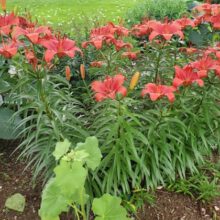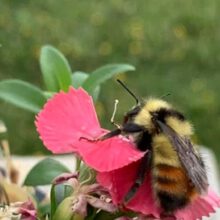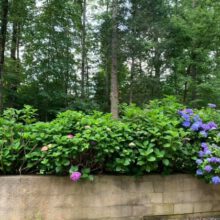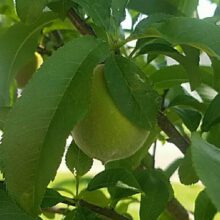The Top 10 Tips For More Butterflies Within Your Garden
Butterflies need flowers to eat from, host plants to lay eggs, plants to shelter and wild corners to hibernate. With these 10 tips you will attract butterflies to your garden!
- Set native plants and leave nettles and thistles.
- Offer nectar in your garden from early spring to late fall.
- Create heights and lows in your vegetation, it is a landmark and lookout for butterflies.
- Create sheltered corners with hedges and hedges.
- In winter, don’t clean up your garden too hard so that eggs, caterpillars and pupae can survive.
- Choose native plant species, which provide better nutrients for our animals.
- Plant a herb garden or vegetable garden and leave some plants on the butterflies.
- Make a feeding table for butterflies with rotting fruit or leave fruits from your fruit tree on the ground.
- Do not use pesticides and as few fertilizers as possible.
- Also convince your neighbors or city council of the importance of butterfly-friendly measures, the greener your environment, the more butterflies and species you will see in your garden.
Extra tips for moths.
The same tips apply to moths as to butterflies. But specifically you can help them by paying attention to the following:
1. Do not overdo it with garden lighting: Garden lighting can be atmospheric, but it can also contribute to light pollution. Moths like to fly in the dark. Artificial light distracts them. Research shows that males and females are less likely to find each other if the environment is too brightly lit. With a dark garden you can do nocturnal animals a favor.
2. Evening scents: Many moths prefer the same food as butterflies: nectar. Butterfly bushes, lavender or marjoram: during the day they are visited by butterflies, but if you go out with your flashlight at night, you will notice that they are equally well enjoyed by moths. Some plants specifically attract more moths. Wild honeysuckle, for example, which starts to smell strongly in the evening. Silene species such as the evening cuckoo flower are also more popular with moths than with butterflies.
Attracting butterflies to your garden.
Plant host plants and leave nettles.
Butterflies love nectar. They find them in flowers. Adult butterflies are not so picky and drink nectar from various flowering native plant species. Caterpillars, on the other hand, feed on only one or a few species. Butterflies search for these plants to lay their eggs, their host plant. For the Peacock, Atalanta and Small fox butterflies, this is the large nettle. The Common blue butterfly is looking for clover species and the Tree blue wants wood, among other things. Apply those host plants in your garden in a flower meadow or in a wild corner at your compost pile.
Provide nectar in your garden year-round.
In addition to host plants, adult butterflies look for flowers with nectar in your garden. They love it. But not all plants provide nectar. Butterfly bush, Celestial key, Willow or Royal weed are just a few examples of plants that excel in attracting butterflies. Make sure to find nectar in your garden from early spring to late fall. In the spring, Willow, Blackthorn, Pepper tree and Hazel are important nectar suppliers. In the autumn, Celestial keys, Queenwort, late-blooming butterfly bushes and Ivy are important.
Create highs and lows.
Butterflies spend longer in a garden with the infrastructure that helps them survive. They need a structured and varied environment, alternating high and low plants, trees, shrubs, herbs and preferably alternating between higher and lower places in the lawn.
In cold, butterflies hide in a sheltered spot and wait until the weather improves. If it is really too hot, they will seek the shade. Butterflies prefer warm corners aimed at the sun. If you also want to offer them shelter from the wind, plant some nectar-rich flowers at the foot of a wall, hedge or hedge.
Butterflies also use the plants in your garden as a landmark. Butterflies are lost in large flower beds with only one plant species. Highly protruding plants are used by males as a lookout to look for females. Some species, such as the Variegated sandeye, Atalanta or Large fathead, defend a territory from that lookout. Butterflies can sunbathe or find partners on short vegetation.
Host plants for caterpillars.
The plants on which butterflies lay their eggs are called host plants. Adult butterflies are not so picky and drink nectar from various types of flowering plants. Caterpillars, on the other hand, usually feed on only one or a few species. Butterflies search for these plants in a targeted manner. In addition to Nettle, the following host plants can attract certain butterflies:
- Queen page: wild carrots, but also on the foliage of carrot, fennel and dill.
- Large white: cabbage varieties and other crucifers, such as damask flower and rapeseed, nasturtiums.
- Green-veined white: cruciferous, such as look-without-look and Pentecost.
- Orange-tip: look-without-look, Pentecost flower and juda medal.
- Lime butterfly: buckthorn, buckthorn.
- Small fire butterfly: sorrel, sorrel.
- Tree blue: buckthorn, ivy, heather, holly, buckthorn, butterfly bush and loosestrife.
- Common blue: various clovers such as hop clover, roller clover and common caterpillar.
- Painted lady: various thistle species, small burdock, mallow and nettles.
- Atalanta: large and small nettle.
- Peacock: large nettle.
- Small fox: large nettle.
- Chopped aurelia: large nettle, hops, elm, currant.
- Map: large nettle.
- Brown and orange sand eye: all kinds of grass.
- Variegated sandeye: broadleaf perennial grasses such as pipe sprout and white bulb.
- Small pearl-bordered fritillary: field violet, but also other types of violets.
Most host plants are native. You can fit them into your garden via a flower meadow (that is a piece of garden that you only mow twice a year) or via trees, shrubs, creepers, hedges and hedges. This way you create structure in your garden. And if you choose the right species, they also provide food for butterflies. Buckthorn, holly, elm, currant, ivy, and hop are good structure former, as well as useful host plants. If you have a calcareous soil, you can choose buckthorn; a species on which you can find the lemon butterfly.



